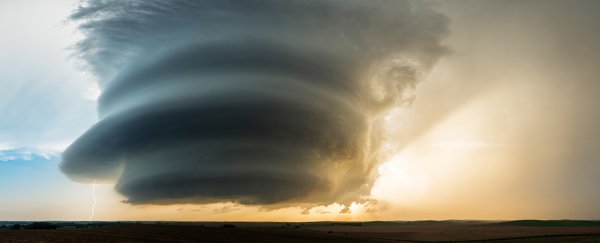The UN Intergovernmental Panel on Climate Change's first major scientific assessment since 2014, released Monday, shows unequivocally that global warming is unfolding more quickly than feared and that humanity is almost entirely to blame.
Here is a rundown of some of its key findings from the IPCC Working Group 1 report on physical science:
Goodbye 1.5 °C, hello overshoot
Earth's average surface temperature is projected to hit 1.5 or 1.6 degrees Celsius above preindustrial levels around 2030 in all five of the greenhouse gas emissions scenarios - ranging from highly optimistic to reckless - considered by the report. That's a full decade earlier than the IPCC predicted just three years ago.
By mid-century, the 1.5 °C threshold will have been breached across the board, by a tenth of a degree along the most ambitious pathway, and by nearly a full degree at the opposite extreme.
There is a silver lining: in the most ambitious if-we-do-everything-right scenario, global temperatures - after "overshooting" the 1.5 °C target - fall back to 1.4 °C by 2100.
Natural climate allies weakening
Since about 1960, forests, soil and oceans have absorbed 56 percent of all the CO2 humanity has chucked into the atmosphere - even as those emissions have increased by half. Without nature's help, Earth would already be a much hotter and less hospitable place.
But these allies in our fight against global heating - known in this role as carbon sinks - are showing signs of becoming saturated, and the percentage of human-induced carbon they soak up is likely to decline as the century unfolds.
Yes, climate change is to blame
The report highlights the stunning progress of a new field, attribution science, in quantifying the extent to which human-induced global heating increases the intensity and/or likelihood of a specific extreme weather event such as a heatwave, a hurricane or a wildfire.
Within weeks, for example, scientists established that the record-shattering heatwave that devastated British Columbia in June would have been "virtually impossible" without the influence of climate change.
More generally, the 2021 IPCC report includes many more findings reached with "high confidence" than before.
Sea rising higher, more quickly
Global oceans have risen about 20 centimetres (eight inches) since 1900, and the rate of increase has nearly tripled in the last decade. Crumbling and melting ice sheets atop Antarctica and especially Greenland have replaced glacier melt as the main driver.
If global warming is capped at 2 °C, the ocean watermark will go up about half a metre over the 21st century. It will continue rising to nearly two metres by 2300 - twice the amount predicted by the IPCC in 2019.
Because of uncertainty over ice sheets, scientists cannot rule out a total rise of two metres by 2100 in a worst-case emissions scenario.
Dire warnings from the deep past
Major advances in paleoclimatology - the science of natural climate in Earth's past - have delivered sobering warnings.
For example, the last time the planet's atmosphere was as warm as today, about 125,000 years ago, global sea levels were likely 5-10 meters higher - a level that would put many major coastal cities under water.
Three million years ago, when atmospheric CO2 concentrations matched today's levels and temperatures were 2.5 C to 4 °C higher, sea levels were up to 25 metres higher.
Methane in the spotlight
The report includes more data than ever before on methane (CH4), the second most important greenhouse gas after CO2, and warns that failure to curb emissions could undermine Paris Agreement goals.
Human-induced sources are roughly divided between leaks from natural gas production, coal mining and landfills on one side, and livestock and manure handling on the other.
CH4 lingers in the atmosphere only a fraction as long as CO2, but is far more efficient at trapping heat. CH4 levels are their highest in at least 800,000 years.
A focus on regional differences
Although all parts of the planet - from the oceans to the land to the air we breathe - are warming, some areas are heating faster than others. In the Arctic, for example, the average temperature of the coldest days is projected to increase at about triple the rate of global warming across the planet as a whole.
Sea levels are rising everywhere, but will likely increase up to 20 percent above the global average along many coastlines.
Tipping points = abrupt change
The IPCC warns against abrupt, "low likelihood, high impact" shifts in the climate system that, when irreversible, are called tipping points. Disintegrating ice sheets holding enough water to raise seas a dozen metres; the melting of permafrost laden with billions of tons of carbon; the transition of the Amazon from tropical forest to savannah - are all examples.
"Abrupt responses and tipping points of the climate system… cannot be ruled out," the report says.
Global ocean 'conveyor belt'
The Atlantic Meridional Overturning Circulation (AMOC) - a large system of ocean currents that regulates the global transfer of heat from the tropics into the northern hemisphere - is slowing down, a trend "very likely" to continue throughout the 21st century.
Scientists have only "medium confidence" that the AMOC will not stall altogether, as it has in the past. If it did, European winters would become much harsher, monsoon seasons would likely be disrupted, and sea levels in the north Atlantic basin could rise substantially.
